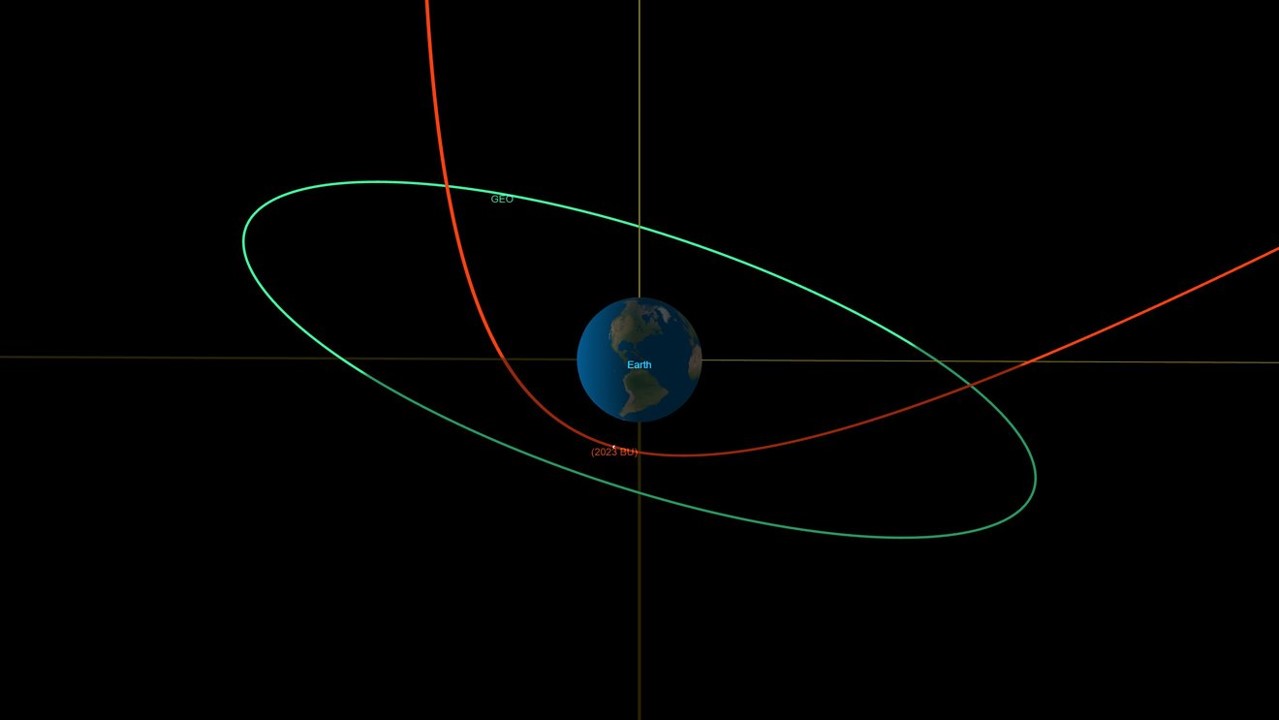An asteroid, dubbed 2023 BU, is set to pass over the southern tip of South America just after midnight GMT on January 26, 2023. The space rock is about the size of a minibus and might approach as close to the Earth as 3,600km (2,200 miles).
Astronomers are confident that the asteroid will miss the planet based on observations of its size and orbit. However, it will pass within the same range as the space occupied by the world’s telecommunications satellites.
According to NASA, it will be the fourth closest approach of an asteroid since records first started. The Virtual Telescope Project will be streaming telescope footage of the asteroid live on January 26.

The asteroid
The space rock has been compared to an elephant or minibus in size. It is between 3.8 and 8.4 meters (11 to 28 feet) in size. This means that even if it did enter Earth’s atmosphere, it would likely burn up. Asteroids smaller than 25 meters tend to burn up, according to NASA.
2023 BU “is expected to make one of the closest approaches by a near-Earth object ever recorded, NASA said in a post on Twitter, “Thanks to diligent teams of planetary defense experts, we know It poses zero risk to Earth.”

If the asteroid did enter the atmosphere, it would do little damage but would produce a “spectacular fireball.” Most satellites orbit the Earth within a distance of 35,000 kilometers (about 21,747 miles) but the likelihood of the asteroid hitting one is also reportedly “very, very small”.
NASA defines asteroids as “rocky, airless remnants left over from the early formation of our solar system about 4.6 billion years ago.” The space agency knows of at least 1,113,527 asteroids.
According to NASA, “Asteroids range in size from Vesta – the largest at about 329 miles (530 kilometers) in diameter – to bodies that are less than 33 feet (10 meters) across.”
On February 15, 2013, a meteor entered Earth’s atmosphere over the southern Ural region in Russia near the city of Chelyabinsk. It blew apart 14 miles (2.5 kilometers) above the ground and released the energy equivalent of around 440,000 tons of TNT.
However, the Chelyabinsk meteor, which was approximately the size of a house, was much larger than BU 2023.

Live-streaming
The Virtual Telescope Project will be live-streaming the celestial occurrence this evening on their website and on YouTube where it will be free to watch on both platforms.
The live stream will be hosted by the astronomer Gianluca Masi. The Virtual Telescope Project is operated by the Bellatrix Astronomical Observatory based in Italy. It is comprised of several robotic telescopes that can be accessed online.





